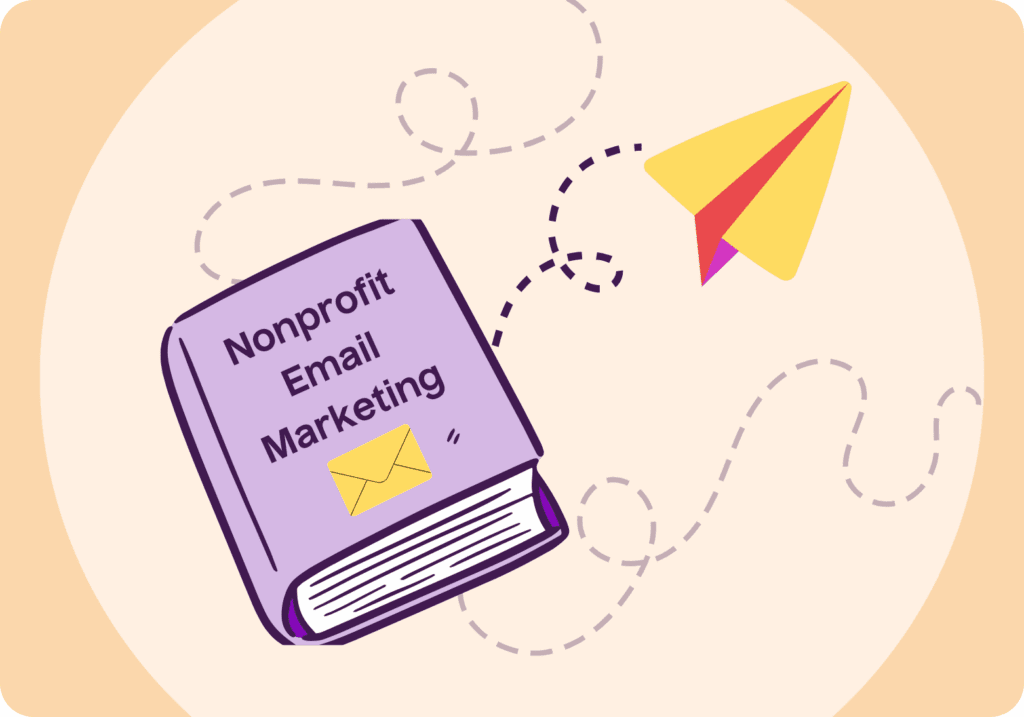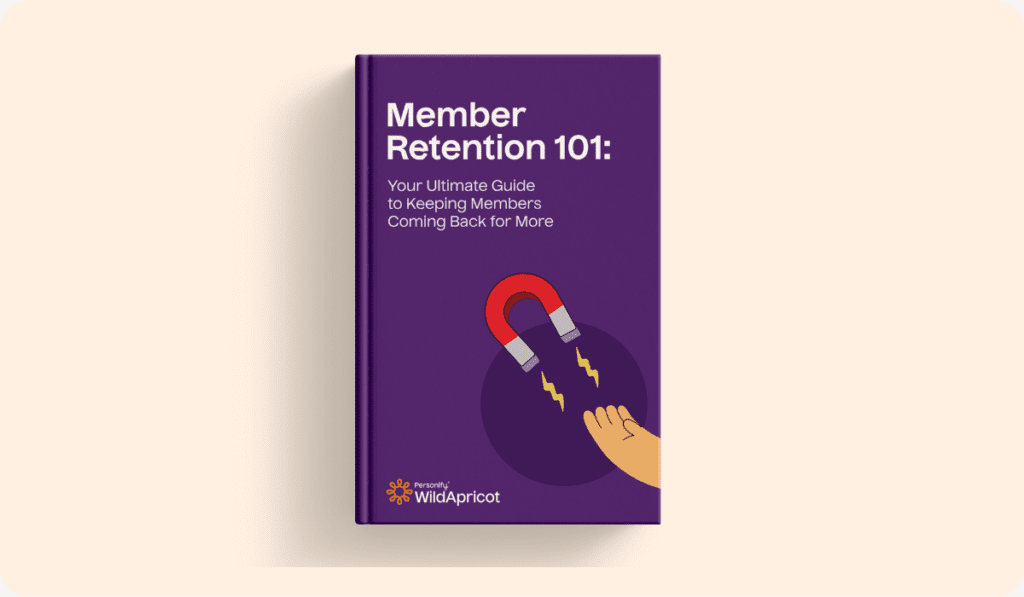It’s the age-old question: If you’re running an incredible nonprofit, but no one knows about it, does it really exist?
Alright, that’s a bit of a stretch. Seriously, though: If you’ve been struggling to bring in donations, recruit new volunteers or raise awareness of your mission, it may be time to put together a marketing plan and let the world know what you’re up to.
But what exactly is nonprofit marketing?
At its core, nonprofit marketing isn’t much different from for-profit marketing. Both types of organizations are trying to convince members of the public to buy what they’re selling – just in different ways.
Whereas a company may be selling a product or service, nonprofits are “selling” a cause. To raise more money, build your volunteer network or establish a solid brand, it’s critical to let your target audience know you’re there and help them connect with your mission.
Whether you’ve dabbled in the world of nonprofit marketing or you’re a total newbie, we’re here to help you get started.
Getting Started with Nonprofit Marketing
In our digital world, the landscape of marketing has exploded with opportunities and creativity. The tricky part can be figuring out how to get started and where to focus your efforts.
Here, we’ve broken down the top marketing channels that should be at top of mind for every nonprofit marketer.
Website Marketing
This is the biggie, which is why it’s number one. If your nonprofit doesn’t already have a website, don’t go any further until you’ve created one.
Not only does a website lend credibility to your cause, it also provides an essential avenue for telling your organization’s story and engaging with your audience.
And as online donations continue to rise in popularity, a website can offer a means for potential donors to give quickly and easily – before another nonprofit captures their attention.
Setting up a website doesn’t have to be costly. Even a simple website using a free platform like Wix will do the trick until you can invest in something a little more advanced. The most important thing is to have an online presence.
Once you’re up and running, how can you make sure people searching for causes like yours will find you?
May we introduce our good friends, SEO and SEM?
SEO
Short for search engine optimization, SEO sounds complicated – but it’s really not. It just means using specific keywords that will make your website more likely to appear in search results.
Check out our article The Top SEO Tips for Nonprofits Who Want to Rank #1 for everything you need to know.
SEM
Another acronym? Don’t worry – this one is also easier than it sounds.
Search engine marketing, or SEM, essentially means paying for advertisements to appear in search engine results pages.
SEM is a great way to help your nonprofit reach a larger audience and generate more traffic to your site.
Worried about the cost? SEM can get a little pricey, but your nonprofit may qualify for support through the Google Ad Grants program, which provides eligible nonprofits with up to USD$10,000 in free monthly advertising. Check it out!
To learn more about SEM and SEO for nonprofits, look at this article from Global Owls.
And don’t forget to read our article 15 Nonprofit Website Best Practices You Need to Know in 2021.
Email Marketing
Email marketing, or the process of sending regular email communications to your target audiences, is one of the most effective marketing tactics out there for today’s nonprofits.
A recent report found that 33 percent of donors in the U.S. and Canada say persuasive emails most commonly inspire them to donate, followed by print advertising (19 per cent) and social media (18 per cent).
Another study revealed that email marketing is responsible for 13 per cent of all online donations.
Sounds exciting, right? But what exactly does email marketing entail?
Email marketing means sending:
- Newsletters: Newsletters are a great way to have a regular inbox presence. You can provide regular updates to your followers and share exciting opportunities to make a difference or get involved.
- Appeals: Launching a campaign or have an urgent need for support? Your email list should always be the first place you turn when soliciting donations. E-appeals can be brief and powerful while providing an easy, immediate way to give.
- Calls to action: Are you collecting signatures for a petition or looking for volunteers? Let your email list know!
- Messages of thanks: Email marketing isn’t just about asking for help. Sending regular notes of pure gratitude to your followers can go a long way toward helping them feel valued and engaged.
For more email marketing ideas and a complete list of our suggested best practices, check out The Essential Guide to Nonprofit Email Marketing.
Social Media Marketing
A full 71 percent of nonprofit organizations consider social media to be one of their most effective marketing channels. And for good reason: 29 percent of donors say a nonprofit’s social media presence inspires them to give even more than emails, websites and print and TV ads.
The good news is that getting started on social media is quick and easy: simply sign up to one or more major social media platforms and start posting!
Don’t be fooled, though: An effective social media marketing strategy does require a commitment to post regularly and an understanding of what your audience is looking for when it comes to quality content.
To get started, check out Social Media for Nonprofits: 4 Questions to Answer Before You Start Posting and 5 Examples of Nonprofit Social Media Strategies (And What You Can Learn From Them).
What Social Media Platforms Should Your Nonprofit Use?
It pays to be selective about which platforms your nonprofit uses.
Facebook is by far the most popular for both nonprofits and donors, with 56 per cent of donors in North America saying a charity’s Facebook presence is most likely to inspire them to give compared to other social media channels.
Instagram is quickly catching up, claiming the second-highest percentage of donations made through social media.
And don’t forget about LinkedIn! Known as the world’s largest professional network, LinkedIn offers potential access to a vast audience of business and community leaders who may be interested in your cause.
Check out our article LinkedIn for Nonprofits: How It Can Help You Reach Your 2021 Goals for tips on getting started.
Organic or Paid?
Social media marketing isn’t just about you or your team posting compelling content to build a following – known as organic content.
There are also ways to extend your reach further and target specific audiences by using paid social media advertising.
But is paid advertising suitable for your nonprofit? It depends. The rules for paid social media advertising are constantly evolving, with important implications for nonprofits.
For more insights into paid social media advertising, check out Design by Cosmic’s The New Rules for Paid Ads on Social Media – and How They Impact Nonprofits.
Event Marketing for Nonprofits
You’re probably not surprised to hear that most nonprofits place a pretty big emphasis on events as an essential tool for marketing and fundraising.
But what you may not know is that events aren’t as effective as nonprofits think they are. A recent study found that only 18 per cent of donors discover nonprofit organizations they want to support through events.
Let’s face it: Many nonprofits find that their events are attended by the same core group of guests year after year, meaning that opportunities to reach new audiences may be limited.
While there’s room to broaden engagement with the rising popularity of virtual events (thanks, COVID-19!), events – especially annual galas – can be a costly and time-consuming form of marketing if that’s your primary goal.
If you’re interested in using events as part of your marketing strategy, focus on offering opportunities for guests to engage with your mission.
The goal isn’t simply to give guests a good time and send them on their way, but rather to help them connect with your cause and learn something new that they won’t be able to forget.
For more insight into different types of events, you may want to consider for your nonprofit, check out this article from Eventbrite.
And don’t forget – you’ll need to market your marketing event! It is a great time to develop strategies for reaching new audiences so you can make the most of your event marketing efforts.
Partner Marketing for Nonprofits
It’s like the old saying goes: If you’re going to run fast, run alone. If you want to run far, run together.
Partnering up – whether with another nonprofit, a corporate sponsor, a local influencer or even a big-name celebrity – can give your marketing efforts a huge boost.
The best part is that there’s no prescribed formula for successful partnered initiatives. You can go as big or as small as your imagination – and budget – will allow you to.
Here are a few ideas for leveraging partnerships to bolster your marketing strategy:
- If you’re partnering with another nonprofit: Host a joint webinar on a topic that you can each offer a unique perspective on. Your guests will learn something new, you’ll access new audiences, and you’ll raise awareness of not one but two essential causes.
- If you’re partnering with a company: Cause marketing is one of the most popular ways to partner with a company. Find out if a local store or chain would be willing to direct a portion of revenue from one or more products to your nonprofit, with both of your organizations sharing in the marketing efforts.
- If you’re partnering with a local influencer or celebrity: When you’re partnering with individual influencers, social media is where it’s at. Access your contact’s large network of followers by asking them to promote your nonprofit’s event or campaign in their voice.
For more advice on how to partner with influencers, check out Whole Whale’s article Influencer Marketing for Nonprofits.
Print Marketing for Nonprofits
Almost all of the marketing strategies we’ve covered here have been about digital channels. But what about good old fashioned print marketing?
It’s still a thing – and it’s still effective! Turns out, print marketing – the practice of placing advertisements in newspapers, magazines and other print materials – is the second-most effective method of inspiring donations.
The problem is that it’s usually quite costly – with a full-page ad or advertorial in a national newspaper costing many thousands of dollars – and has a limited reach compared to online advertising.
If you’re interested in going the route of print marketing, we recommend making it a once-in-a-while thing that makes the best use of your limited marketing dollars.
For example, you may want to invest some money to promote your major fundraising campaign. Still, it may not make as much sense to use print advertising to celebrate the launch of a niche program that may only be of interest to a small segment of your audience.
To find out more about how your nonprofit can use paid media or simply get started with a public relations strategy, take a look at Public Relations for Nonprofits: Everything You Need to Know.
How to Create a Nonprofit Marketing Plan
Now that you’re familiar with some of the best marketing strategies for nonprofits, how can you put it all together?
We’ve got you covered.
In our article Follow These 7 Steps to Create a Nonprofit Marketing Plan, we talk about:
- Reviewing past marketing activities and campaigns to figure out what’s worked and what needs to change.
- Focusing your marketing efforts on one specific goal at a time rather than trying to do everything at once.
- Using SMART objectives to define and achieve your marketing strategy.
- Staying in the know about current trends or news items that you can incorporate into your marketing strategy to remain as relevant as possible in our fast-paced world.
- Identifying and targeting a specific audience.
- Crafting a compelling message using storytelling best practices.
- Choosing the best platform for your message.
These steps will help you develop and execute an effective marketing strategy that will work for your specific organization.
Four of the Best Nonprofit Marketing Campaigns to Inspire You
Need a little inspiration to get started? Check out these four examples of successful nonprofit marketing campaigns to get those creative juices flowing!
Charity: Water’s Pledge Your Birthday Campaign
Charity: Water has a simple but powerful mission: To provide clean water to people in developing nations. Since it was founded in 2006, the nonprofit has raised an incredible $100 million.
The nonprofit is often cited for its marketing efforts, which focus on encouraging participation and engagement.
One of its most successful and ongoing marketing campaigns is also a fundraiser: The Pledge Your Birthday Campaign, which asks supporters to forego birthday gifts and instead ask friends and family to make a gift to Charity: Water.
We know; you may think that lots of charities take this approach. But what makes Charity: Water’s birthday campaign unique is the marketing power they put behind it.
For Charity: Water, the Pledge Your Birthday Campaign is big. They promote it on social media, blog posts and profiles and even through videos on third-party platforms.
Their efforts are paying off: The Pledge Your Birthday campaign currently has over 100,000 people signed up and has raised above $9 million.
Just Be Inc.’s #MeToo Movement
Credit: Christina Animashaun for Vox
Just Be Inc. is a youth-led campaign aiming to inspire and empower young women of colour during their adolescent years.
You may not have heard of them before. Still, Just Be Inc. is the force behind the #MeToo campaign, a movement initially launched to support women of colour who have experienced sexual violence.
After the campaign went viral in 2017, it became embedded in public discourse about sexual assault in everyday life and the workplace.
Just Be Inc.’s #MeToo campaign is the ultimate example of the potential of multichannel marketing. With a primary focus on spreading the word via social media to ignite a global conversation, the organization also engaged influencers and celebrities, created a website and used the power of storytelling to build the movement.
Today, #MeToo has become a powerful force for change that has evolved beyond a campaign into a worldwide call to action.
The ALS Association’s Ice Bucket Challenge
We can almost guarantee you’ll remember this one.
In 2014, the ALS Association – a nonprofit dedicated to researching and fundraising for the neurodegenerative disease Amyotrophic Lateral Sclerosis (ALS) – launched the ALS Ice Bucket Challenge.
To participate, all you had to do was dump a bucket of ice water over your head and post the video to social media using the hashtag #ALSIceBucketChallenge.
The campaign’s impact was massive: It raised $115 million, allowing the Association to increase its annual funding for worldwide research by 187 per cent. The number of peer-reviewed journal articles published by ALS Association-funded researchers more than doubled due to the campaign.
The success of this campaign lay in its unexpectedness, its hilarity and its appeal to anyone with access to a bucket, some ice and a desire to get really, really cold.
Social Tees Animal Rescue’s Swipe Right to Adopt Campaign
What happens when you mix rescue animals and… Tinder?
That was the question at the heart of Social Tees Animal Rescue’s Swipe Right to Adopt Campaign.
In 2014, Social Tees Animal Rescue – a New York City-based nonprofit that rescues animals at risk of being euthanized – launched this unique marketing campaign to raise awareness of their mission and facilitate adoptions.
Through the campaign, animals available for adoption were given Tinder profiles featuring cute photos and eye-catching snippets of information about their personalities.
When users swiped right to indicate they were interested, they received information about Social Tees Animal Rescue and details about the adoption process. By the end of the campaign, over 2,700 people had swiped right.
This campaign is an excellent example of the potential of partnered marketing. Both Social Tees Animal Rescue and Tinder gained wide recognition – and hundreds of animals found their fur-ever homes.
Feeling Overwhelmed? Don’t Worry – Just Get Started!
With so many marketing options and channels available, it can be easy to feel overwhelmed and simply ignore the fact that your nonprofit really, really needs to develop a marketing plan.
If this is you, the best approach is just to get started. Choose one campaign and one channel and see where it takes you. Once you’ve dipped your toe in the water of nonprofit marketing, you’ll be feeling ready to design a comprehensive plan in no time.
Most importantly, have fun with it! Nonprofit marketing is full of creativity and bold new ideas. See where your imagination takes you – and let us know how you’re getting on in the comments!
Resources
- The Ultimate Guide to Nonprofit Branding
- 15 Nonprofit Website Best Practices You Need to Know in 2021
- The Top SEO Tips for Nonprofits Who Want to Rank #1
- 15 Nonprofit Website Best Practices You Need to Know in 2021.
- The Essential Guide to Nonprofit Email Marketing.
- Social Media for Nonprofits: 4 Questions to Answer Before You Start Posting
- 5 Examples of Nonprofit Social Media Strategies (And What You Can Learn From Them
- LinkedIn for Nonprofits: How It Can Help You Reach Your 2021 Goals
- Announcing the 2020 Virtual Event Report: Everything You Need to Know to Run a Better Virtual Event
- How Your Nonprofit Can Succeed with Cause Marketing
- Nonprofit Advertising: A Guide to Different Approaches and Examples
- Public Relations for Nonprofits: Everything You Need to Know.
- Follow These 7 Steps to Create a Nonprofit Marketing Plan
- An Introduction to Nonprofit Storytelling









